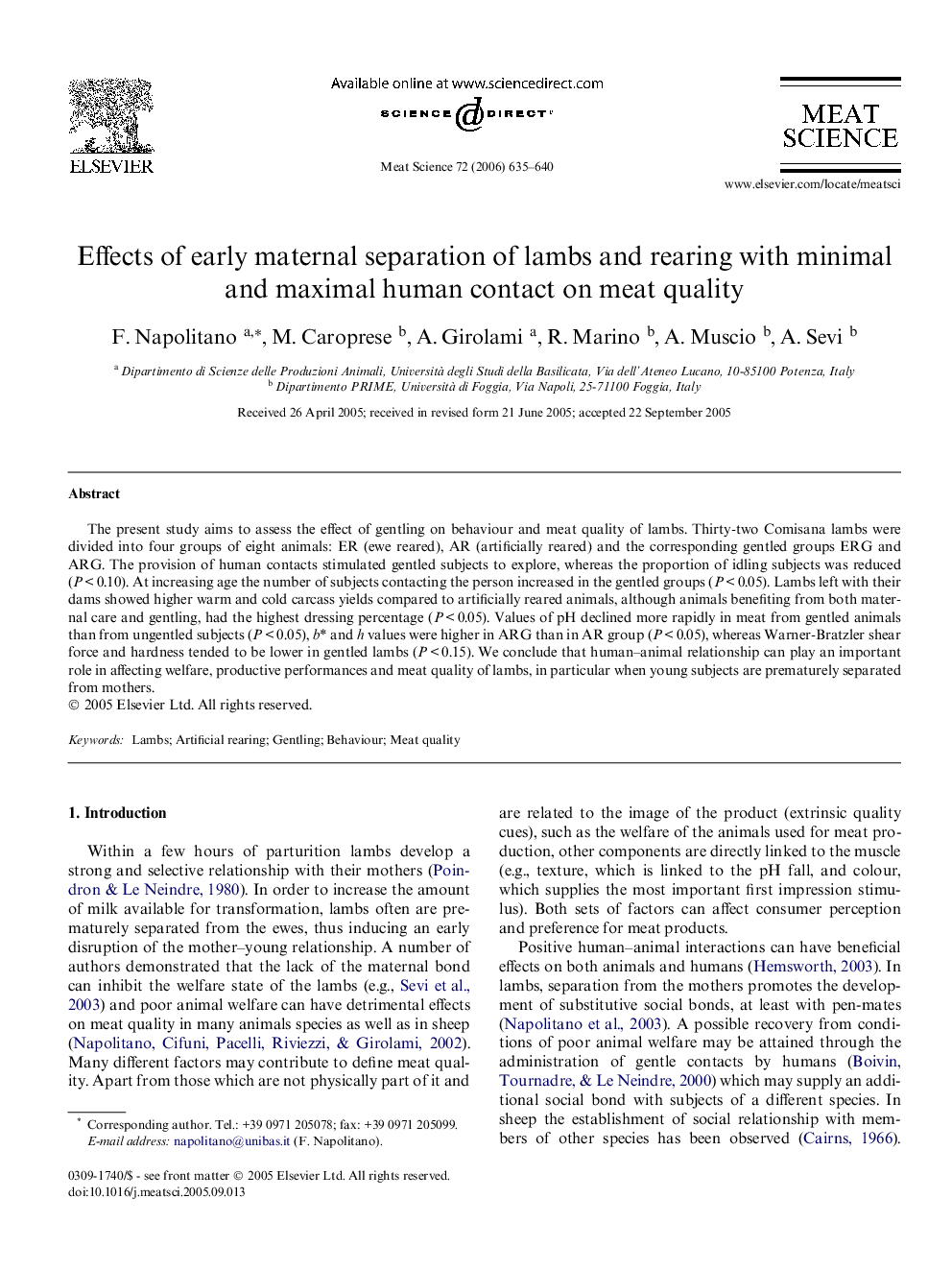| Article ID | Journal | Published Year | Pages | File Type |
|---|---|---|---|---|
| 2452268 | Meat Science | 2006 | 6 Pages |
The present study aims to assess the effect of gentling on behaviour and meat quality of lambs. Thirty-two Comisana lambs were divided into four groups of eight animals: ER (ewe reared), AR (artificially reared) and the corresponding gentled groups ERG and ARG. The provision of human contacts stimulated gentled subjects to explore, whereas the proportion of idling subjects was reduced (P < 0.10). At increasing age the number of subjects contacting the person increased in the gentled groups (P < 0.05). Lambs left with their dams showed higher warm and cold carcass yields compared to artificially reared animals, although animals benefiting from both maternal care and gentling, had the highest dressing percentage (P < 0.05). Values of pH declined more rapidly in meat from gentled animals than from ungentled subjects (P < 0.05), b* and h values were higher in ARG than in AR group (P < 0.05), whereas Warner-Bratzler shear force and hardness tended to be lower in gentled lambs (P < 0.15). We conclude that human–animal relationship can play an important role in affecting welfare, productive performances and meat quality of lambs, in particular when young subjects are prematurely separated from mothers.
